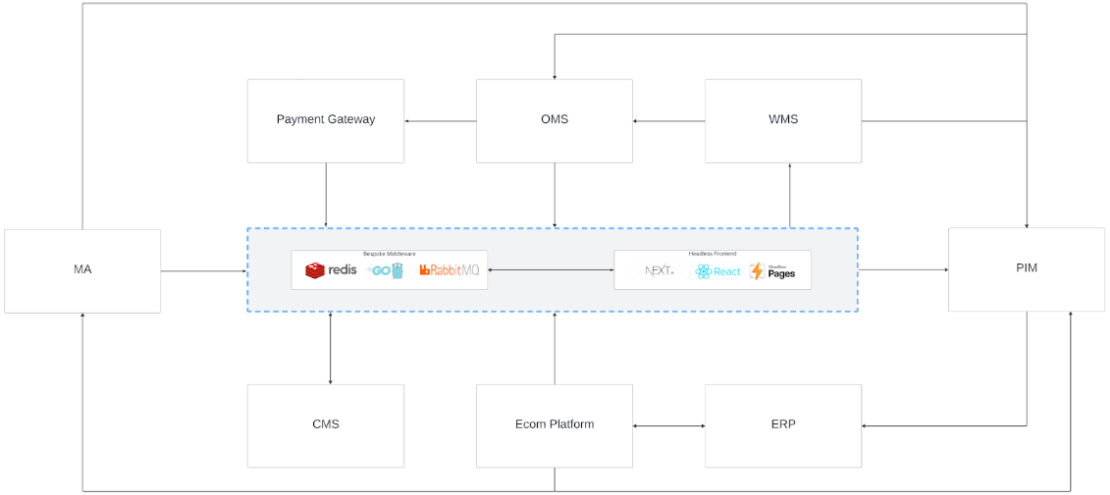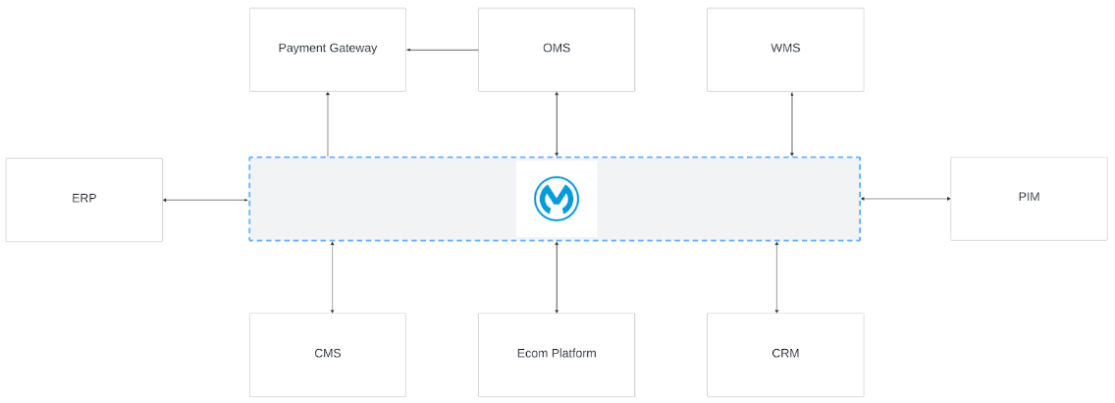Choosing the Right Integration Framework
Is it Middleware, an API Gateway, an integration hub, or something else? There are three broad types of integration frameworks, each with its own defining characteristics and purpose. Which one is right for you?
Before making a choice, you need to be clear on what you want to achieve—both now and in the mid-term future. Based on this, you can align the technology to suit your needs.
Type 1: Bespoke Middleware
A custom code base that provides connectivity between specific systems for a defined use case.
Example: Headless Commerce, where the commerce platform needs to connect with front-end systems, solving a tactical problem.
Key Points:
- Reduces point-to-point integrations
- Simplifies management
- Allows for greater agility in a closed-loop ecosystem
- Not easily reusable or scalable outside of the specific use case
When to Use:
- When you have a clear, limited use case for connecting a few systems
- The use case is not expected to change much over time

Type 2: System Middleware
Middleware specific to a system that requires multiple integrations.
Example: SAP Integration Hub, ideal for managing SAP-SAP integrations and exposing specific APIs to the ecosystem.
Key Points:
- Vital for managing internal connectivity within a specific system
- Reduces complexity, making it easier to manage
- Not helpful with third-party integrations (remains point-to-point)
- Not easily reusable and offers limited intelligence (e.g., ETL, IDP, workflow management)
When to Use:
- In projects involving a large central system, like an ERP
- When multiple internal integrations between system components are needed
- Typically provided as part of an overall solution, project-specific

Type 3: Enterprise Middleware
An open environment that manages many different systems from various vendors.
Example: Mulesoft, ideal for complex ecosystems with multiple vendors and various integration types.
Key Points:
- Fully reusable and sharable API marketplace for third parties
- Includes AI capabilities for managing workflows and tasks
- Not restricted to a specific use case, easily expandable
When to Use:
- When the use case is strategic, not just a single tactical requirement
- When future changes to the integration framework are expected
- When the technology stack needs to be agile

How to Choose
To determine the right framework for your business, consider the following:
- Data Architecture: Where is your data mastered now, and where should it be mastered in the future?
- System Requirements: Which systems need access to what information?
- Project Scope: Is your requirement project-specific, or do you need a solution for the entire business?
- Data Types: What data types are you managing?
- Future Roadmap: What projects are on your roadmap?
- Team Structure: How are your internal teams structured, and how do they collaborate with vendors?
The answers to these questions will help you decide whether to use: - Bespoke Middleware for a one-off, specific use case, - System Middleware for a large project, or - Enterprise Middleware to support your entire business.
There’s No “Right” Answer
For example, you may use SAP Integration Hub for all SAP-related elements (designed for this purpose), while Enterprise Middleware manages the rest of the ecosystem. This is a common scenario.
Get in Touch
Learn more by contacting us at commercial@featuremind.com and visit www.featuremind.com.
